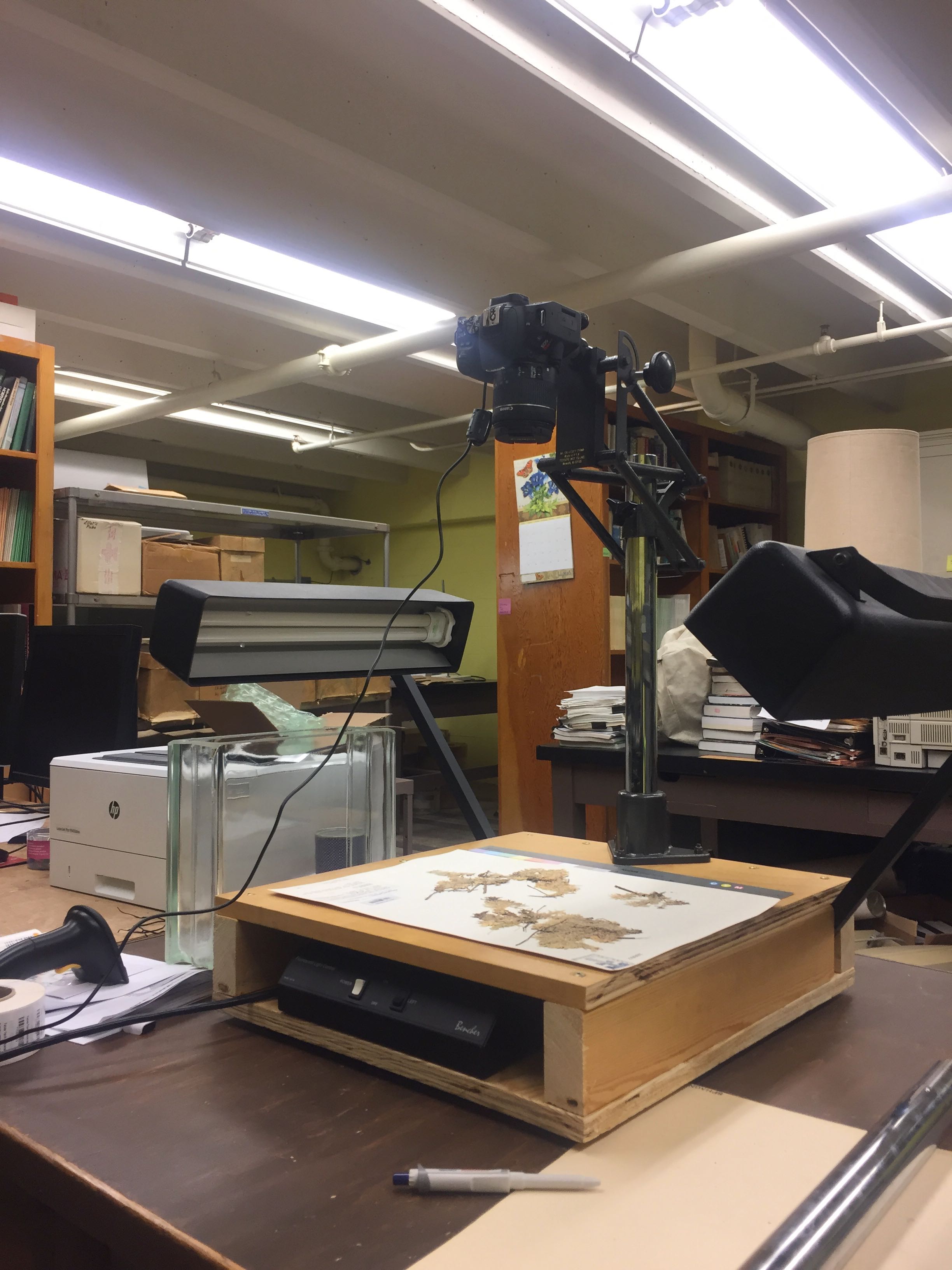The digitization project in the herbarium continues! We are now adding images to our 19,735 recorded specimens.
We were able to assemble an imaging platform using a lot of found and donated materials. The lights were donated by Travis Marsico from Arkansas State Herbarium– they are the same lights seen in their paper in APPS from last summer! We already had a copy stand with a camera attachment, but it was set up in portrait mode, making it difficult to take centered images. With help from Dylan Schwilk and some spare wood, we assembled a new imaging platform that accommodated the lights. It’s looking pretty good:

The imaging effort is progressing thanks to help from five students who are working in the herbarium this Spring. In addition to imaging our recorded specimens, the students are also taking images of previously unrecorded specimens. Once the images are uploaded to TORCH, they can begin transcribing the label data. Click here to meet the 2018 Reed Herbarium Team!
The images are taken with a Canon DSLR (Rebel SL2) camera and loaded into Canon’s own software. The only processing we do to the images is to rotate them and export as a 2000 x 3000 pixel JPEG image (the RAW image stays on our backup drive). The images are named using the barcode labels, matched to our previously-uploaded database. We then upload the images to the BISQUE server, an image hosting platform driven by Cyverse. Academic usage of BISQUE is free for 100 GB, which should be plenty for all of our specimens (each image is about 2 MB). Next, a script on Symbiota pulls the images from BISQUE, and because of the image names, automatically associates them with specimens in our database.
The system is working really well, and our students are making good progress, with nearly 500 specimens imaged this month! Here’s one of my favorites, and one of our oldest collections: Osmunda from 1893!